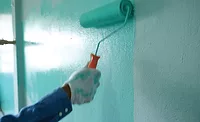Balancing Act

At the same time, TiO2 suppliers are looking to manage operating rates and pursue incremental increases in capacity sufficient to keep customers satisfied and maintain reasonably high levels of capacity utilization. The resulting forecast is supply and demand balance for the next several years.
So concludes an annual TiO2 review presented recently in Europe by Millennium Inorganic Chemicals, the world’s second-biggest TiO2 supplier behind DuPont Co.

In the 21 months following its launch on Jan. 1, 1999, the beleaguered euro lost 28% of its value against the U.S. dollar before staging a recent rally that has recovered some of the difference. In mid-January, the euro had crept back up to approximately 95¢ (U.S.).

As a result of this highly charged cost scenario, Zwicker said Millennium and the other major TiO2 suppliers can be expected to continue an ongoing program of incremental capacity increases to keep pace with growing worldwide demand — as opposed to embarking on major investments in totally new production facilities. According to Millennium’s figures, these incremental expansions will boost total global capacity from 4.331 million metric tons annually (mta) in 1997 to 4.514 million mta in 2001. All the major suppliers are chipping in with capacity expansions between 1999 and 2002. But no massive new-plant projects are anticipated (see charts).
On the consumption side of the equation, TiO2 use worldwide has accelerated following the virtually flat demand situation seen between 1997 and 1999, a period that witnessed the serious economic downturn in Asia-Pacific and a more modest slowing in Western Europe. In the three-year period between 1999 and 2001, on the other hand, TiO2 consumption is expected to show an increase of about 4.4% per year worldwide, paced by strong economic recoveries in Western Europe and Asia/Pacific (see table), according to Millennium’s recently issued TiO2 industry review.

The results show the effects of economic trends in the various regions: the European and Asian markets were staging recoveries from downturns experienced in 1998 and 1999, while the strong U.S. economy generated robust TiO2 demand growth in 1999 and early 2000 before activity began to cool in the second half of last year. A series of interest-rate cuts by the Federal Reserve put the brakes on U.S. economic growth in the last half of 2000.
In the smaller but increasingly important Latin American market, TiO2 consumption rose sharply from 1997 to 1999, but much slower growth is estimated for 1999-2001. A key factor, Zwicker said, was the devaluation of the Brazilian currency, the real, in 1999, which actually helped cause a retreat in TiO2 use of about 3% in 2000. In a phenomenon seen in the Latin American market but not duplicated elsewhere, Zwicker said coatings manufacturers reduced the TiO2 content in coatings last year in a move to cut product prices. Currency woes reduced the buying power of consumers in a region where relatively low incomes are a major factor in purchasing decisions. TiO2 consumption is expected to rebound this year in South America, Zwicker said.
Speculating about the TiO2 industry’s outlook for this year, Zwicker said Millennium is forecasting solid, though not spectacular, TiO2 consumption growth of 2.5-3% worldwide, with Asia/Pacific setting the pace at 4-6% higher demand. Growth in demand of 2-5% is expected in Europe, while the increase in the United States is pegged at 1-2%, based on the widespread perception that U.S. economic growth will continue to moderate.
Looking for a reprint of this article?
From high-res PDFs to custom plaques, order your copy today!





